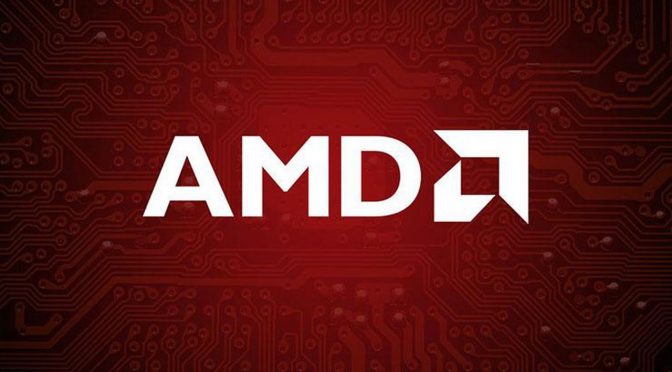AMD is about to release its new NAVI graphics cards and as we’ve already reported, these GPUs will not support ray tracing. However, it appears that the red team is already working on a software/hardware hybrid model for ray tracing, and has shared the first details for it.
According to AMD, this hybrid approach will address some issues that can be found with solely hardware-based ray tracing solutions, and will bring major performance improvements to games taking advantage of it.
As AMD detailed:
“The hybrid approach (doing fixed function acceleration for a single node of the BVH tree and using a shader unit to schedule the processing) addresses the issues with solely hardware based and/or solely software based solutions. Flexibility is preserved since the shader unit can still control the overall calculation and can bypass the fixed function hardware where needed and still get the performance advantage of the fixed function hardware. In addition, by utilizing the texture processor infrastructure, large buffers for ray storage and BVH caching are eliminated that are typically required in a hardware raytracing solution as the existing VGPRs and texture cache can be used in its place, which substantially saves area and complexity of the hardware solution.”
It’s worth noting that AMD has patented this hybrid model, meaning that we will most likely see it being used in next-gen consoles (both PS5 and Project Scarlett support ray tracing and since they will be using graphics cards based on NAVI, we are certain that this method will be heavily used).
AMD has patented this hybrid approach as “Texture processor based ray tracing accelerator method and system.”
“The system includes a shader, texture processor (TP) and cache, which are interconnected. The TP includes a texture address unit (TA), a texture cache processor (TCP), a filter pipeline unit and a ray intersection engine. The shader sends a texture instruction which contains ray data and a pointer to a bounded volume hierarchy (BVH) node to the TA. The TCP uses an address provided by the TA to fetch BVH node data from the cache. The ray intersection engine performs ray-BVH node type intersection testing using the ray data and the BVH node data. The intersection testing results and indications for BVH traversal are returned to the shader via a texture data return path. The shader reviews the intersection results and the indications to decide how to traverse to the next BVH node.”
AMD has also shared some more details about this hybrid model that you can read below (or you can visit this link that features the entire patent).
“A texture processor based ray tracing acceleration method and system are described herein. A fixed function BVH intersection testing and traversal (a common and expensive operation in ray tracers) logic is implemented on texture processors. This enables the performance and power efficiency of the ray tracing to be substantially improved without expanding high area and effort costs. High bandwidth paths within the texture processor and shader units that are used for texture processing are reused for BVH intersection testing and traversal. In general, a texture processor receives an instruction from the shader unit that includes ray data and BVH node pointer information. The texture processor fetches the BVH node data from memory using, for example, 16 double word (DW) block loads. The texture processor performs four ray-box intersections and children sorting for box nodes and 1 ray-triangle intersection for triangle nodes. The intersection results are returned to the shader unit.
In particular, a fixed function ray intersection engine is added in parallel to a texture filter pipeline in a texture processor. This enables the shader unit to issue a texture instruction which contains the ray data (ray origin and ray direction) and a pointer to the BVH node in the BVH tree. The texture processor can fetch the BVH node data from memory and supply both the data from the BVH node and the ray data to the fixed function ray intersection engine. The ray intersection engine looks at the data for the BVH node and determines whether it needs to do ray-box intersection or ray-triangle intersection testing. The ray intersection engine configures its ALUs or compute units accordingly and passes the ray data and BVH node data through the configured internal ALUs or compute units to calculate the intersection results. Based on the results of the intersection testing, a state machine determines how the shader unit should advance its internal stack (traversal stack) and traverse the BVH tree. The state machine can be fixed function or programmable. The intersection testing results and/or a list of node pointers which need to be traversed next (in the order they need to be traversed) are returned to the shader unit using the texture data return path. The shader unit reviews the results of the intersection and the indications received to decide how to traverse to the next node in the BVH tree.”

John is the founder and Editor in Chief at DSOGaming. He is a PC gaming fan and highly supports the modding and indie communities. Before creating DSOGaming, John worked on numerous gaming websites. While he is a die-hard PC gamer, his gaming roots can be found on consoles. John loved – and still does – the 16-bit consoles, and considers SNES to be one of the best consoles. Still, the PC platform won him over consoles. That was mainly due to 3DFX and its iconic dedicated 3D accelerator graphics card, Voodoo 2. John has also written a higher degree thesis on the “The Evolution of PC graphics cards.”
Contact: Email

